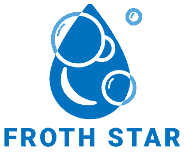Depending on the kind of coffee you enjoy, your Keurig might be very complex and sophisticated or very simple. But, one thing that you should have in either is a water filter.
Whether you live in an area with water that is crystal clear or with water that is an odd color and has a slightly off taste, a water filter is a good idea.
You might be wondering why a water filter would be necessary in a machine that already has a filter. But this filter is intended to stop coffee grounds from getting into your coffee. A water filter will remove any impurities before it reaches the coffee.
What is a Water Filter?
So, what does a water filter look like in a Keurig? Keurig water filters look very similar to normal coffee pods. But, instead, you place the water filter (also called a filter cartridge) into the water reservoir.
The water filter cartridge is placed directly into the section of the reservoir from which the water is drawn up into the machine. The machine then carries on with its normal function and makes your coffee.
The water filter contains charcoal which has purifying qualities. At first, charcoal might not sound like the healthiest substance to ingest. But charcoal is actually really good for you.
Charcoal has become a very common ingredient in food, drink, and health and beauty products such as toothpaste. Charcoal, when properly prepared, is safe to ingest. This is the kind of charcoal included in water filter cartridges.
Benefits of a Water Filter
A water filter is a very small addition to your Keurig. They are definitely a good idea. But they are not 100% necessary. The use of a water filter primarily depends on the water in your area.
To help you make the decision for yourself, here are the main benefits of adding a water filter to your Keurig.
- Improves taste. Depending on where you live, your water will have different levels of minerals. This is categorized as “hard” or “soft” water. Water hardness is defined by the amount of minerals, such as magnesium and calcium, in the water.
Hard water can interfere with the taste of your coffee. So, a water filter can reduce the amount of these minerals and improve the taste of your coffee.
- Removes sediment. If you live in an area that doesn’t have very filtered water, it might contain very small pieces of sediment. This, as you can imagine, isn’t very pleasant in coffee.
- Removes contaminants. Again, this will depend on the water in your area. But, if you have ever drunk the water in a big city, you will know that it can still be affected by pollution after industrial filtration. So, an additional filter in your coffee machine can just add an extra layer of filtration against impurities.
Drawbacks of a Water Filter
- Interference with medication. This depends on how often you use your Keurig and the amount of charcoal in the cartridge. Charcoal draws out toxins and minerals in the water but, if ingested, it will also do this in your digestive system. This means that, if you ingest charcoal after taking medication, the charcoal might stop the medication from being properly absorbed.
How to Add a Water Filter to Your Keurig
Adding a water filter to your Keurig coffee machine is very easy. But it’s important to make sure that you place it in the right place.
As mentioned above, water filter cartridges do resemble coffee pods. But it’s very important that you know not to place the filter in any other area than the reservoir.
The contents of the water filter are not dangerous but it won’t be nice or make you feel great if it is ingested directly in your coffee.
Here are the simple steps for inserting a water filter into your Keurig:
- Soak the water filter cartridge in water for 5 minutes.
- Empty the Keurig’s water reservoir.
- Remove the filter unit in the water reservoir.
- After 5 minutes, rinse the water filter cartridge.
- Place the filter cartridge inside the filter unit.
- If your unit has a timer dial, set it to 2 months.
- Replace the filter unit and water reservoir.
Top Tips
So, now you know the best way to filter water in your Keurig, here are our top tips for getting the best coffee from your machine.
- Replace the water filter every 2 months. This is super important. The water filter will gradually reduce in strength. So it will eventually stop working and begin to contaminate your water.
- Clean the reservoir regularly. As it only holds water, it’s easy to assume that the water reservoir never really needs cleaning. But it’s important to make sure that it gets cleaned regularly.
- Clean the reservoir with a damp soapy cloth. But do not fill it with soap and water. This can make it difficult to remove the soap. And you might end up with a soapy cup of coffee the next day.
- Descale your Keurig every 3 to 6 months. As well as cleaning the reservoir, it’s important to descale the internal plumbing of your Keurig. This is especially important if you live in an area with hard water that, as mentioned above, is rich in minerals. These minerals can become caught inside the internal plumbing and will build up over time.
If you live in an area with high levels of calcium, then you will need to descale your Keurig more often. This is because calcium can build up more quickly.
Instructions on descaling your Keurig can be found in the user manual. If, like a lot of people, you don’t happen to have these anymore (or they seem to have just disappeared) then you can find the instructions online.
Descaling is super easy and simply involves turning on and using your Keurig as you would when making a coffee. But you instead fill the reservoir with water and Keurig Descaling Solution.

